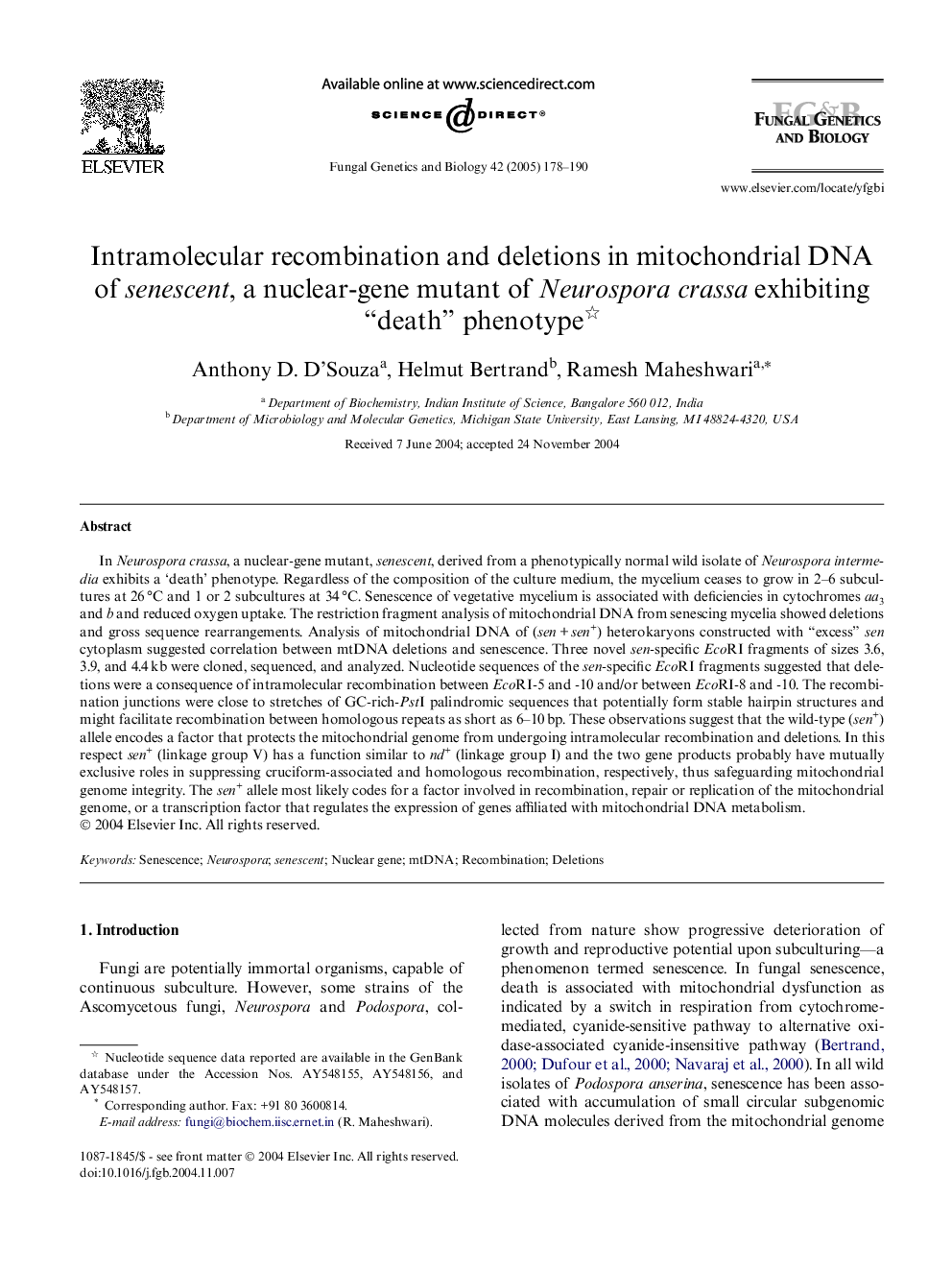| Article ID | Journal | Published Year | Pages | File Type |
|---|---|---|---|---|
| 10939723 | Fungal Genetics and Biology | 2005 | 13 Pages |
Abstract
In Neurospora crassa, a nuclear-gene mutant, senescent, derived from a phenotypically normal wild isolate of Neurospora intermedia exhibits a 'death' phenotype. Regardless of the composition of the culture medium, the mycelium ceases to grow in 2-6 subcultures at 26 °C and 1 or 2 subcultures at 34 °C. Senescence of vegetative mycelium is associated with deficiencies in cytochromes aa3 and b and reduced oxygen uptake. The restriction fragment analysis of mitochondrial DNA from senescing mycelia showed deletions and gross sequence rearrangements. Analysis of mitochondrial DNA of (sen + sen+) heterokaryons constructed with “excess” sen cytoplasm suggested correlation between mtDNA deletions and senescence. Three novel sen-specific EcoRI fragments of sizes 3.6, 3.9, and 4.4 kb were cloned, sequenced, and analyzed. Nucleotide sequences of the sen-specific EcoRI fragments suggested that deletions were a consequence of intramolecular recombination between EcoRI-5 and -10 and/or between EcoRI-8 and -10. The recombination junctions were close to stretches of GC-rich-PstI palindromic sequences that potentially form stable hairpin structures and might facilitate recombination between homologous repeats as short as 6-10 bp. These observations suggest that the wild-type (sen+) allele encodes a factor that protects the mitochondrial genome from undergoing intramolecular recombination and deletions. In this respect sen+ (linkage group V) has a function similar to nd+ (linkage group I) and the two gene products probably have mutually exclusive roles in suppressing cruciform-associated and homologous recombination, respectively, thus safeguarding mitochondrial genome integrity. The sen+ allele most likely codes for a factor involved in recombination, repair or replication of the mitochondrial genome, or a transcription factor that regulates the expression of genes affiliated with mitochondrial DNA metabolism.
Related Topics
Life Sciences
Biochemistry, Genetics and Molecular Biology
Cell Biology
Authors
Anthony D. D'Souza, Helmut Bertrand, Ramesh Maheshwari,
